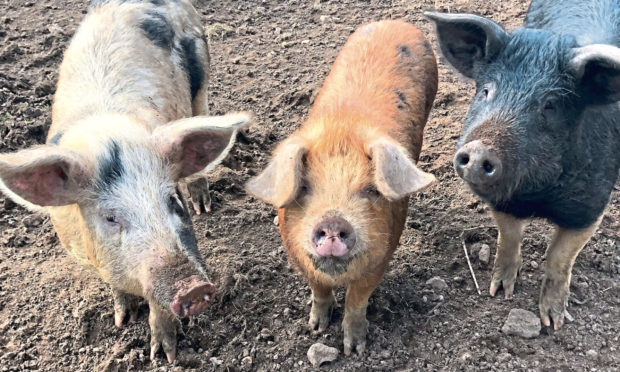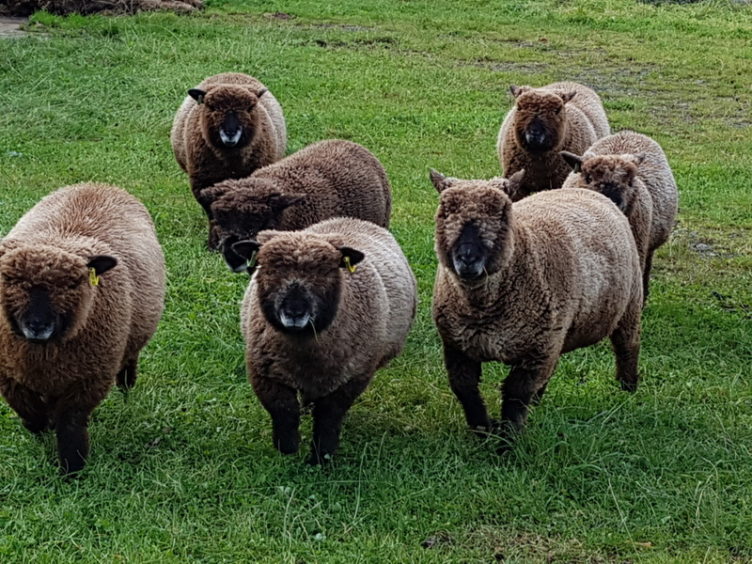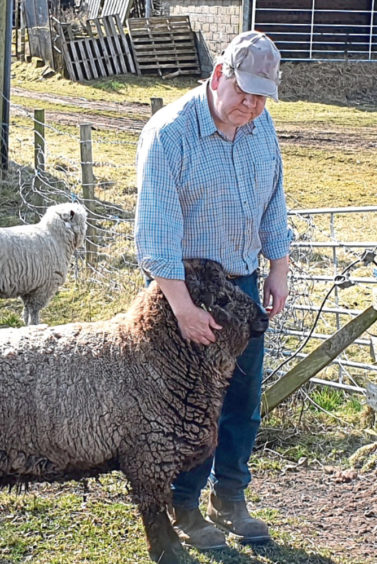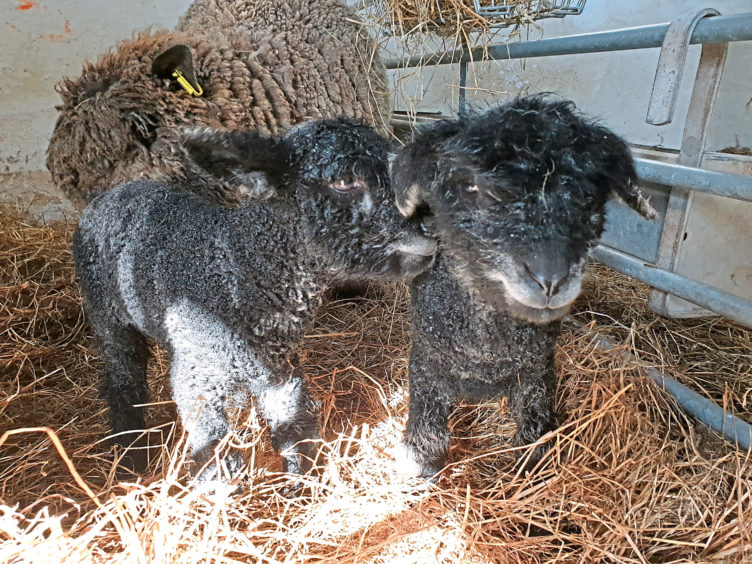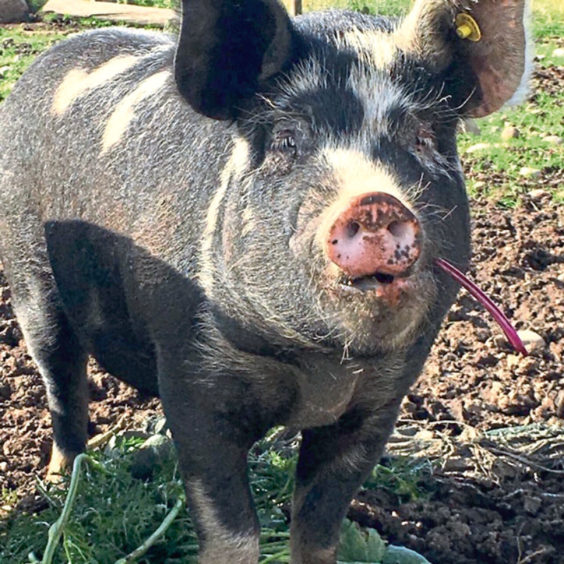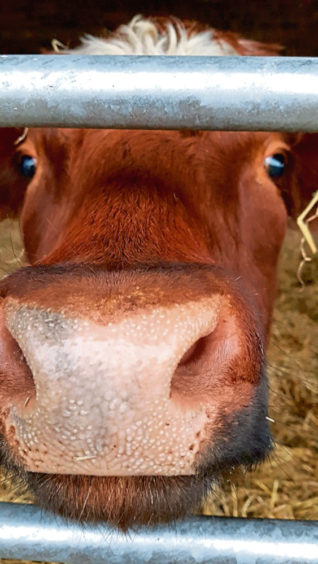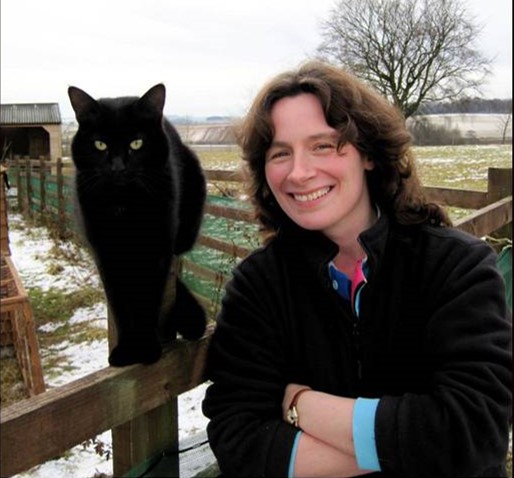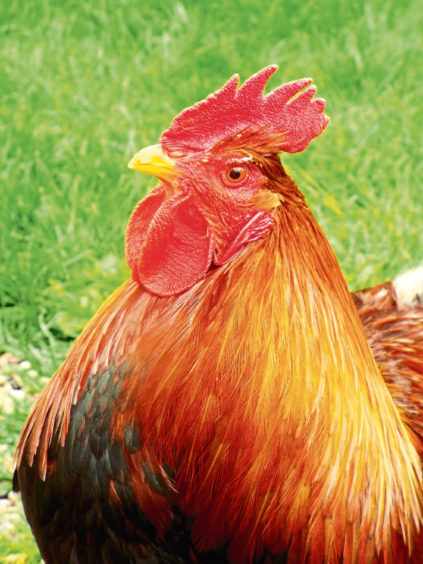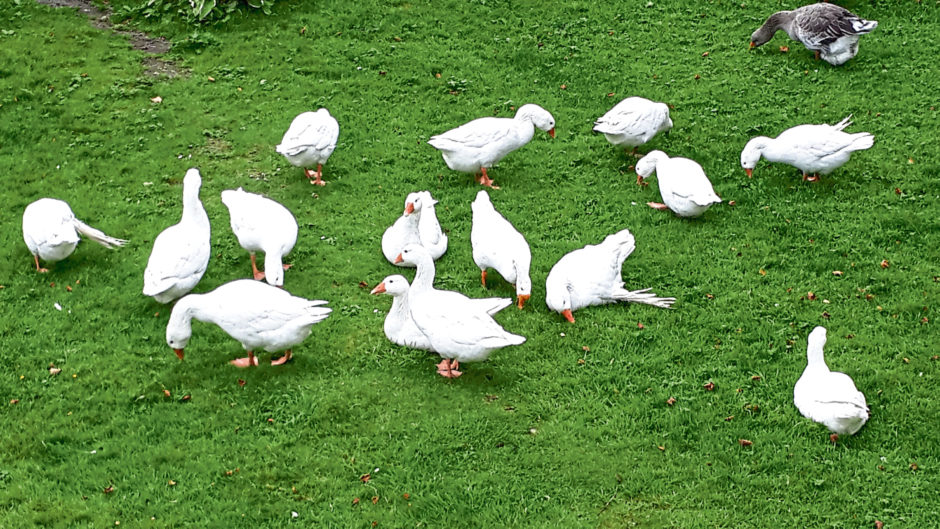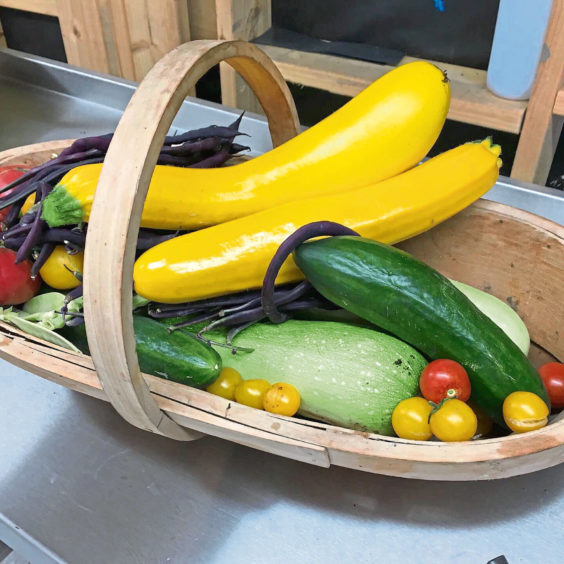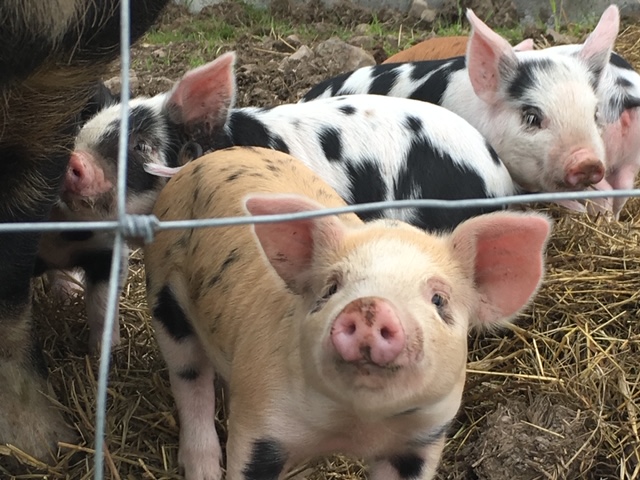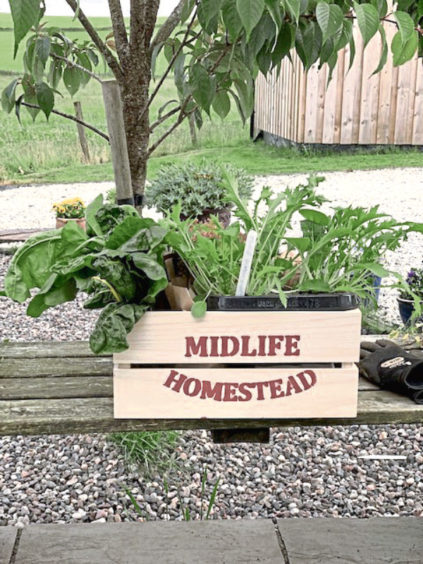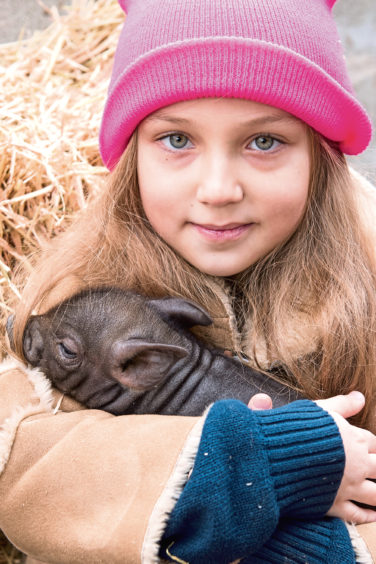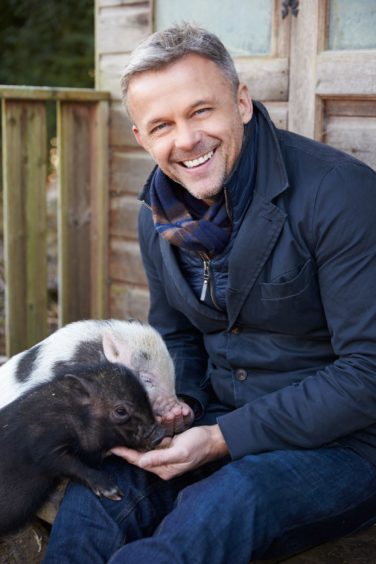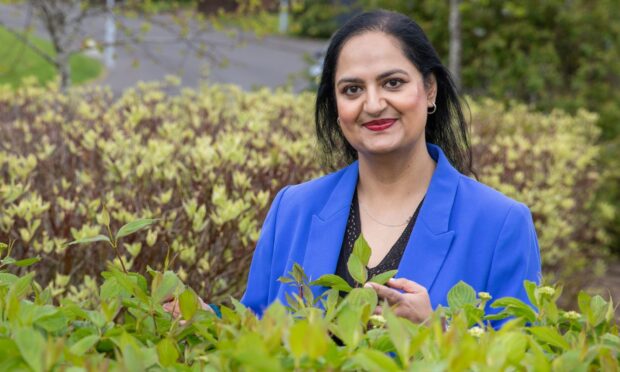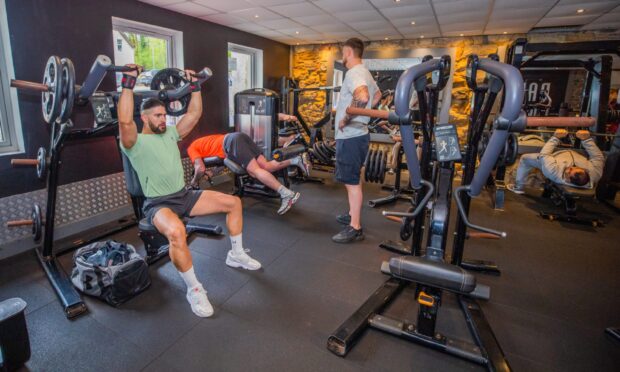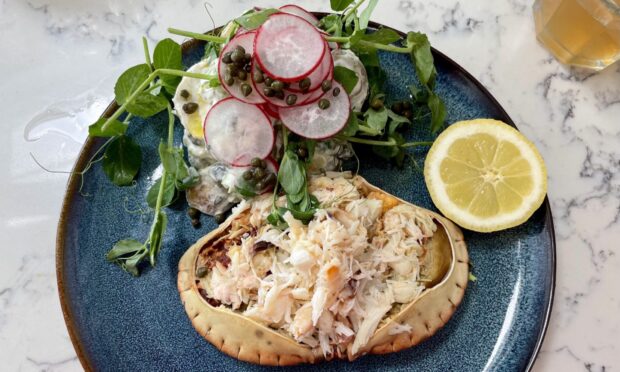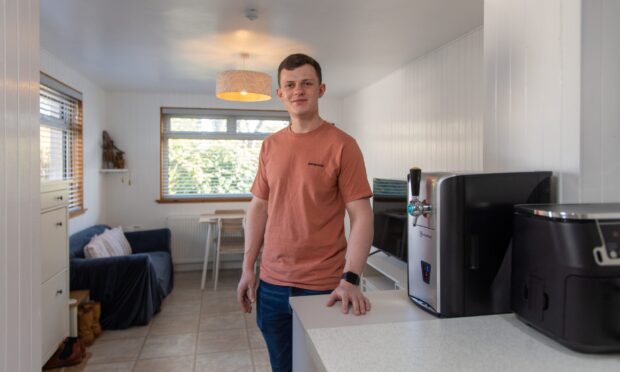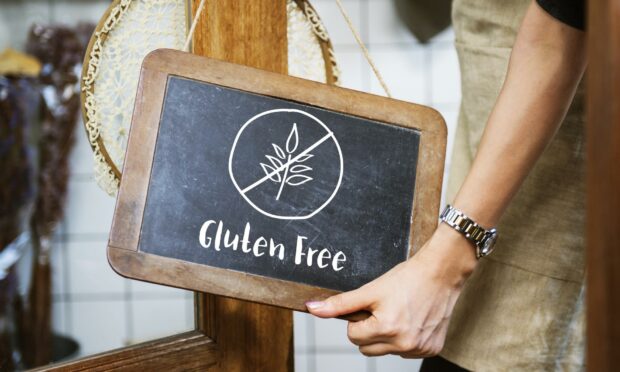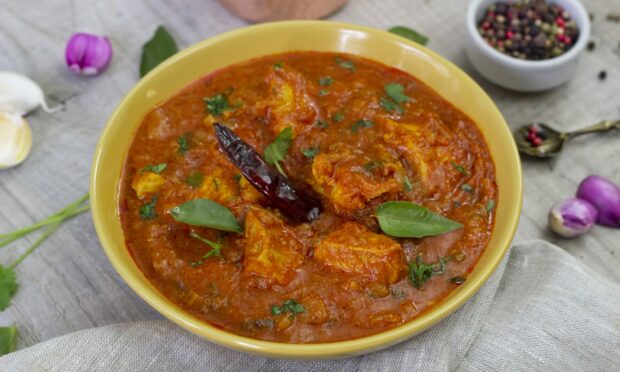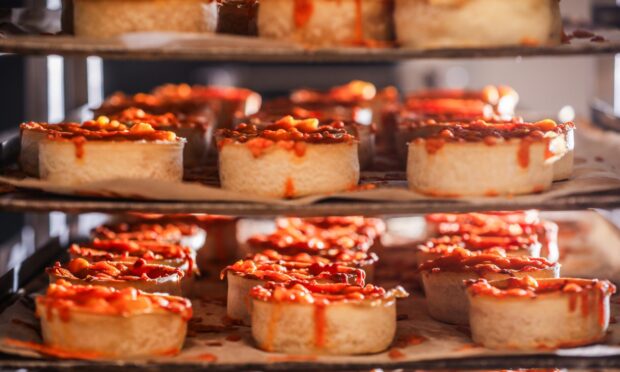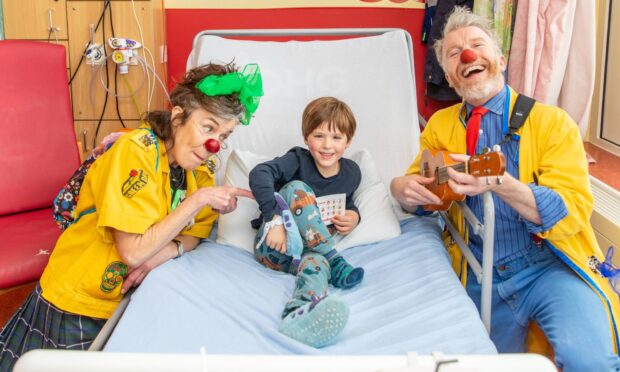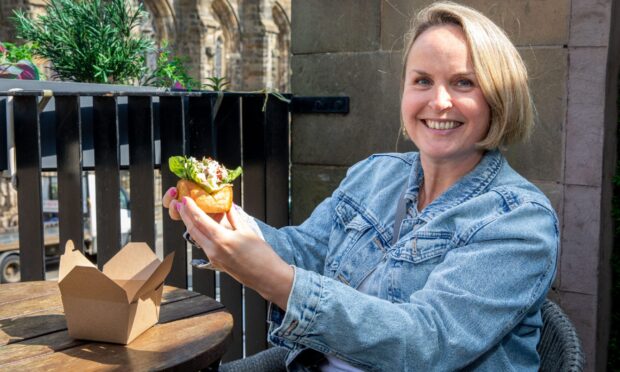Smallholders are increasing in number, spurred on by foraging chefs like Hugh Fearnley-Whittingstall and the desire to live “the good life” and become “self-sufficient”. Gayle finds out more…
It’s pretty easy to self-isolate when you live in the middle of nowhere with a freezer packed with meat and veg, a field full of animals, and you make your own bread and cake,” smiles Arnot Tippett.
Arnot has a 40-acre smallholding boasting hens, sheep and rare breed pigs and as secretary of Smallholding Scotland, he’s on a mission to support, promote and represent fellow smallholders across the country.
With many of us dreading a trip to the shops for groceries thanks to the risk posed by coronavirus, he’s well aware that now is a fantastic time to be self-sufficient.
The fact smallholdings are increasing in popularity has much to do with people wanting to know where their food comes from, what conditions animals were reared in and whether they enjoyed a happy life. It’s about sustainability and provenance, in essence.
Here, four smallholders give us a deeper insight into their lives…
ARNOT’S STORY
Arnot and his wife Dee “accidently” acquired their smallholding in South Angus in 2016.
“We intended buying a one-acre paddock and an old barn, but ended up with the entire smallholding!” says Arnot.
The couple have a small flock of coloured Ryeland sheep which they breed for wool and meat.
They produce hogget – meat from a sheep between one and two years old – which is halfway between tender lamb and full flavoured mutton.
“As they’ve lived outside their whole lives and grazed grass, they develop a lovely layer of creamy fat which transforms the flavour of the meat when cooked,” says Arnot, 52.
The Tippetts also rear rare-breed Oxford Sandy and Black pigs for meat, and chickens for fresh eggs. With lambing season in full swing, Arnot has been surviving on very little sleep.
Recent “days” on his smallholding have begun around midnight with trips to the lambing shed.
Water buckets are topped up, hay racks replenished and pens are checked to ensure lambs have full tummies and mums have full udders.
This process is repeated at 2am, 4am and 6am when the ewes are turned out into a paddock.
One rather unpleasant task – for Dee – is cleaning lambs’ bottoms. This must be done because when they pass colostrum milk, it can “clog up” their bums which is uncomfortable. “It’s an acquired smell!” says Arnot.
Next up is feeding the pigs, cleaning out their ark, topping it up with fresh straw and filling their water trough.
“I give them a big scratch and kick their toys around, which they love,” says Arnot.
Lambs are born at all times of day and night, and it amazes Arnot how quickly they stand up, albeit shakily, feed, and bleat their hearts out.
After a late breakfast, usually around midday, the next round of checking, feeding and watering begins.
Make the mistake of referring to Arnot as a “hobby farmer” and he gets slightly frustrated.
“I have hobbies. They are golf and football,” he frowns.
“A hobby is something you do after work to relax.
“I’ve never worked harder in my whole life since we got the smallholding. It’s definitely not a hobby. It’s a different way of life.
“It reconnects you with where your food comes from. It’s food production on a small scale but doing it in a sustainable way.”
Where Arnot gains greatest satisfaction is in knowing animals have led a happy, healthy life.
“We are ‘foodies’ and care passionately about provenance, food miles and also the passion of the producer,” he says.
“By being able to produce our own meat and vegetables and have a local network of other smallholders from whom we can source other produce, we know we are eating good food that has minimal, if any, impact on the environment.
“Lambing is exhausting but seeing new life is an incredible experience. And being able to work closely with animals on a daily basis and get to know their quirks is a real privilege.”
I’ve never worked harder in my whole life since we got the smallholding. It’s definitely not a hobby. It’s a different way of life.”
A major downside is having to take animals to slaughter. Arnot, who gives his animals names “as they are individual and as loved and respected as pets,” although “no, they’re not pets”, finds it difficult.
“No one likes doing this,” he laments. “I often get asked how I could look after animals for so long and then eat them. I reply by saying: ‘so you don’t eat meat then?’ and when they say yes, I ask where their meat comes from.
“Those who buy from local butchers and farm shops probably have a reasonable idea, but those who buy from supermarkets have little if any idea.
“It’s precisely because we eat meat that we care so much. We give all our animals the best life, and eventually the best death, we possibly can.
“We treat the carcass with the same respect we gave the animal. We use absolutely every part of the animal – nothing goes to waste.
“I understand some people will find that strange but I take great pride and comfort from knowing exactly what’s going on my family’s plate.”
Arnot strongly believes smallholders deserve more support, and says they miss out because they’re so small-scale.
“Historically in Scotland, big farmers have been well supported by the NFU and other organisations, and similarly crofters by the Scottish Crofting Federation,” he reflects.
“However, smallholders by their very nature tend to be independently resourceful and as such haven’t had that kind of formal structured support.
“That was the main reason we started Smallholding Scotland in 2017 – to support and represent the smallholding community, promote smallholding, and offer information for those interested in smallholding.”
Like most smallholders, Arnot and Dee need an income to allow them to feed their animals and maintain their holding; it’s rare that a smallholding can provide a big enough annual income to support itself.
“I work full-time for the NHS as a programme manager,” he says. “Winter is especially hard as daily routines of checking, feeding and cleaning are invariably done in the cold, dark early hours of the morning before work, and late evening after work. It’s hard but very rewarding.”
MARY’S STORY
Brought up in a family that grew their own fruit and veg and as a big fan of Hugh Fearnley-Whittingstall’s River Cottage, former vet Mary Fraser was destined to become a smallholder.
“My family grew everything from the usual cabbages and peas through to sweetcorn and melons, which in Scotland were exotic!” she smiles.
“I always wanted to be as self-sufficient as possible. While I can’t grow coffee or chocolate, I try to produce food for meals for a large part of the year.”
Mary, 49, has lived on her three-acre smallholding in Glenfarg, Perthshire, for 15 years. During that time, she’s had sheep and chickens, pigs and turkeys.
“Having a smallholding is about knowing where your food comes from; producing food locally rather than flying it half way round the world.
“If there’s surplus then food can be sold, but with only three acres, that’s not a common occurrence.
“We might not be able to produce avocados, and be more likely to grow turnips and potatoes, but we can produce good quality, good tasting food.
“It takes time to grow things, and most smallholders need to work to pay the bills, so it’s very difficult to earn a living from smallholding.”
Mary, who works full-time in education at Stirling University, feels the role smallholders play in local food production should be more widely recognised.
“Farmers get support from the government, but with only three acres, we’re too small to qualify for any help,” she adds.
The highlights for Mary of running a smallholding are vast, but she lists spotting the first asparagus, strawberries or sweetcorn of the season and seeing new life being born as most important.
Any downsides? A wet, muddy field or piles of snow, when animals are sick or die and, of course, taking animals to the abattoir is not easy.
Every day on Mary’s smallholding starts with feeding the animals.
“The pigs hear you opening and closing doors and start grunting for their breakfast. Then the sheep will hear them and start baaing – it’s not quiet in the countryside.
“Once everyone is fed then I can get my breakfast. I only have a few sheep. At the moment the main focus is planting vegetables.”
For anyone dreaming of owning a smallholding, Mary says: “Anyone with a garden can grow their own vegetables and anyone with a windowsill can grow lettuce. It needn’t involve a lot of land.”
KEESJE’S STORY
South Africa-born Keesje Crawford-Avis always knew she wanted to farm.
She and husband Oliver bought Burmieston Farm and Steading near Logiealmond in Perthshire in 2014.
“We came here to a derelict, overgrown site, or a blank canvas depending on your view!” she laughs.
“We have Jacob sheep, chickens, geese, a five-year-old orchard and the beginnings of copses of trees for various uses over our four acres.”
The couple bought the space complete with a dilapidated steading knowing they would need something extra to fund their smallholding.
They renovated it into an accommodation and multifunctional space used to host events and workshops themed around everything from flower arranging to wine tasting.
Several times a year, the couple host “WWOOFers” – volunteers signed up to undertake worldwide opportunities on organic farms across the globe.
“It’s a fantastic opportunity to travel from our own ‘backyard’, learn new skills from volunteers and get lots of work done,” says Keesja.
“Many hands really do make light work!”
The concept of smallholding, to Keesje, is “a space where people grow food but in a smaller space than what is generally considered a farm”.
“In the developing world, small-scale agriculture is very important, but it can often fall down the cracks in the UK.
“There’s an idea that food is only grown by people who have a lot of land, but lots of small-scale growers have so much to offer – especially when it comes to veg and small-scale livestock rearing.
“All smallholders invest heavily in buildings and their land, so that’s them investing in their local communities. Smallholding Scotland gives us the chance to show that growing food can happen in all sorts of set-ups.”
Like Arnot, Keesja finds taking livestock to the slaughterhouse extremely difficult – “as they all have personalities”.
“It’s also hard when crops are spoiled by rabbits, pigeons or the weather as the effort feels wasted,” she adds.
“It can also be disappointing when our small size means it’s difficult to get contractors to help us mow the grass, access proper training, or compete on an even playing field with businesses that have the safety net of subsidies.”
For Keesje, who works full-time at Nourish Scotland on climate change and food policy, being a smallholder is about having a better understanding of where “at least some of my food comes from”, and the questions to ask of the sources she gets other food from.
“Every smallholder and their family and friends are that bit closer to the reality of how food is produced and how people are part of the same ecosystem as the rest of the natural world,” she says.
Ultimately, Keesja dreams of selling a range of items from their smallholding – fibre, meat, flowers, herbs, eggs and veg.
However, she believes smallholders get “no support at all” financially or technically as they are below the minimum to qualify under the Scottish Rural Development Programme rules.
SANDRA’S STORY
“With the current national restrictions of movement, we realise how lucky we are to have outdoor space,” says Sandra Bannister, who officially launched her three-acre smallholding, Midlife Homestead in Fossoway near Kinross, with her husband Jonathan last year.
“We have freedom to walk in the fields, time to enjoy nature, sow and plant for the season, be with our animals and enjoy the marvel of lambing.”
Sandra, 56, a trustee of Smallholding Scotland, believes there is a major distinction between the terms “hobby farming” and “smallholding”.
“To me, a hobby is something you can opt in and out of, whereas there’s no opting out of having a smallholding. It’s a life choice.”
When Sandra, a retired nursing education director at Stirling University, set up the smallholding, it was unlike anything she’d ever done.
“I found being outside and growing things was therapeutic and gave me feelings of self-worth,” she explains.
“But the animals were completely new so we’ve been learning along the way.
“The support of Growbiz and a small rural business grant pushed me to venture into the business world supplying seasonal crates of produce, free-range eggs, home baking, bread and more within a 10-mile radius.”
Sandra and Jonathan have a small flock of Shetland sheep, hens and two donkeys, Patrick and Solomon. They also have Mangalitsa, Kune Kune and Gloucester Old Spot pigs.
There’s no such thing as a typical day, but recently Sandra’s been up at the crack of dawn to feed an orphaned lamb sleeping in her kitchen.
Another daily highlight is hanging out with her donkeys: “They know you’re coming and start braying!”
Other tasks include sowing seeds, digging in manure and baking cakes using fresh eggs.
To me, a hobby is something you can opt in and out of, whereas there’s no opting out of having a smallholding. It’s a life choice.”
Sandra sees many positives in running a smallholding, including a better quality of life for animals and family members.
“It’s good to be influential in educating the young about living from the land, animal husbandry, and sharing responsibilities of the homestead in the family,” she adds.
“I’m an active grandma and keen to ensure my grandson learns early about the joy of mud, growing things, and being kind to animals.”
“There’s a real sense of achievement: eating what you have grown or reared, learning new skills, being in awe as nature and nurture allow the cycles of lambing, farrowing and seasonal produce to return each year.”
info
The Scottish Smallholder Festival is Scotland’s largest smallholder event, celebrating the best of Scottish smallholding, growing and craft.
The next festival is planned for October 24 2020, at Forfar Mart.
Smallholding Scotland is a charitable body established to support, promote and represent smallholders in Scotland.
It links members to shared services such as sheep shearers which can undertake small flocks, vermin control, sheep scanning, land services such as fencing, tree and hedge cutting, drainage, general maintenance and supply of hay and straw. smallholding.scot
